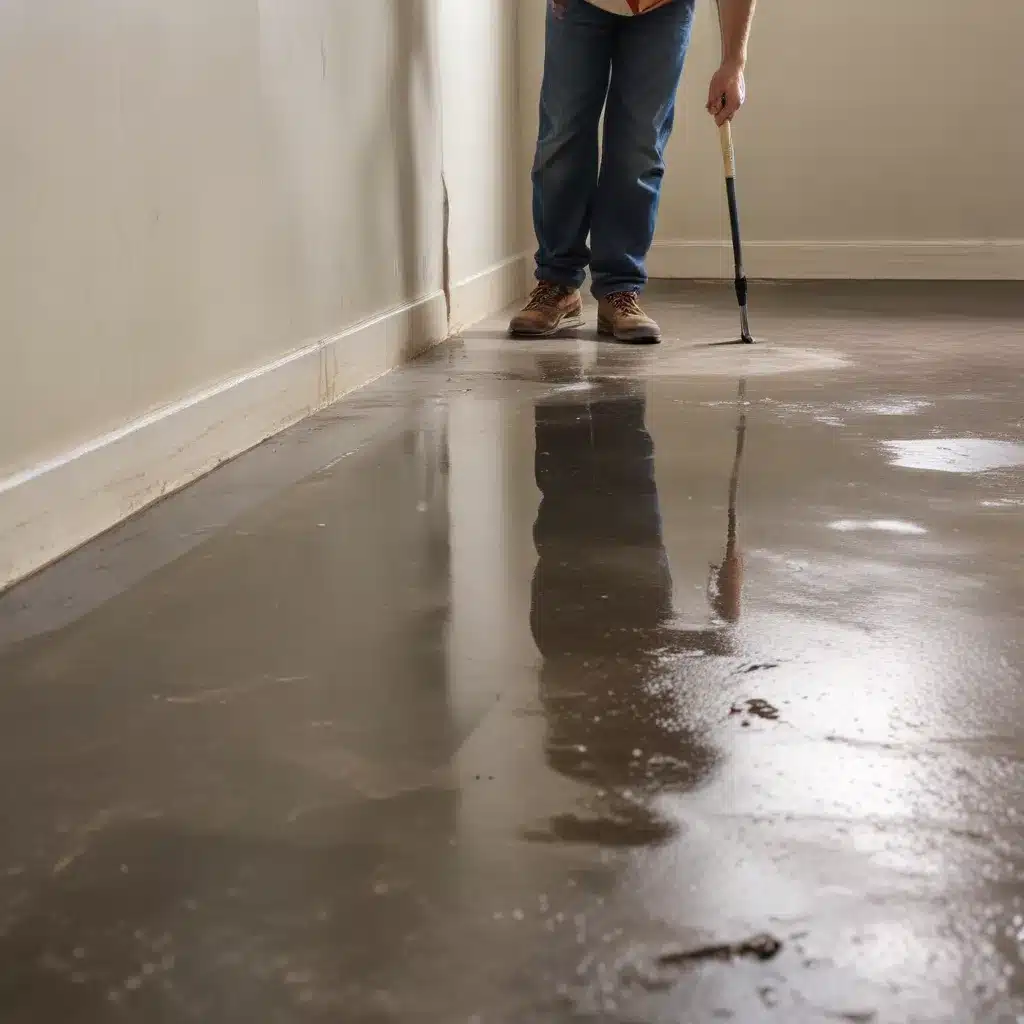
As an experienced home improvement consultant, I’ve seen firsthand the devastating impact that water leaks can have on a renovation project. Whether it’s a slow drip behind the dishwasher, a burst pipe in the bathroom, or a leaky roof, uncontrolled water can quickly turn a dream renovation into a nightmare of mold, structural damage, and costly repairs. That’s why waterproofing should be a top priority for any homeowner embarking on a renovation journey.
Understanding the Risks of Leaks
Water leaks are more than just a nuisance – they can pose serious risks to your home and your family’s health. Unchecked leaks can lead to the growth of toxic mold, which can trigger respiratory issues and other health problems. They can also compromise the structural integrity of your home, causing rot, warping, and even foundation damage over time. And the financial toll can be staggering, with the average cost of water damage repairs ranging from $3,000 to $10,000 or more, depending on the extent of the damage.
Identifying Common Leak Locations
Bathrooms and kitchens are notorious hotspots for water leaks, thanks to the abundance of plumbing and the frequent use of water. Showers, tubs, sinks, and appliances like dishwashers and icemakers are all prime culprits. But leaks can also occur in less obvious places, such as around windows and doors, in the foundation, or on the roof. Even a small crack or gap can allow water to seep in and wreak havoc over time.
Prioritizing Waterproofing in Your Renovation Plan
When planning a renovation, it’s crucial to make waterproofing a top priority. Addressing potential leak sources upfront can not only save you from costly repairs down the line but also ensure the long-term durability and performance of your newly renovated spaces. By proactively incorporating waterproofing strategies into your renovation plan, you’ll be well on your way to creating a home that’s not only beautiful but also resilient against the inevitable ravages of water.
Preparing for Effective Waterproofing
Assessing Your Home’s Existing Waterproofing
Before you dive into a renovation, it’s essential to conduct a thorough assessment of your home’s existing waterproofing systems. This may involve inspecting the sub-floor, checking for any signs of water damage or mold, and evaluating the condition of your home’s exterior walls, roof, and foundation. By understanding the current state of your home’s waterproofing, you can better identify areas that need attention and develop a tailored renovation plan to address them.
Selecting Appropriate Waterproofing Materials
When it comes to waterproofing, not all materials are created equal. Depending on the scope of your renovation and the specific areas you’re targeting, you may need to consider a variety of waterproofing solutions, such as sealants, membranes, coatings, or even specialized drainage systems. It’s important to research and select products that are not only effective at preventing leaks but also eco-friendly and family-safe.
Coordinating with Contractors
Proper waterproofing often requires the expertise of skilled professionals, such as plumbers, roofers, or masonry specialists. When working with contractors, be sure to communicate your waterproofing goals and priorities, and establish a clear understanding of their roles and responsibilities. This collaboration will help ensure that your renovation project is executed with the necessary attention to detail and that your home’s waterproofing is up to par.
Implementing Waterproofing Strategies
Waterproofing Bathrooms and Wet Rooms
Bathrooms and other “wet rooms” are particularly vulnerable to water damage, so it’s essential to implement robust waterproofing strategies in these spaces. This may include using waterproof membranes on the walls and floors, installing sloped floors to promote proper drainage, and ensuring that all plumbing fixtures and connections are properly sealed and secured.
Waterproofing Exterior Walls and Foundations
Leaks can also occur in the exterior of your home, particularly around windows, doors, and the foundation. Applying sealants, caulks, and coatings to these areas can help prevent water infiltration and protect the structural integrity of your home.
Waterproofing Roofs and Decks
Leaks from the roof or on outdoor decks and patios can be equally problematic, leading to water damage and potential safety hazards. Investing in high-quality roofing materials, such as metal or synthetic tiles, and using specialized waterproof membranes on decks and balconies can help safeguard these vulnerable areas.
Maintenance and Inspection
Routine Inspections and Preventative Measures
Waterproofing your renovation is not a one-time event – it requires ongoing vigilance and maintenance. Regularly inspecting your home for signs of leaks, such as water stains, mold, or musty odors, can help you catch issues early and address them before they escalate. Additionally, taking preventative measures, such as cleaning gutters, maintaining caulking and sealants, and ensuring proper ventilation, can go a long way in keeping your home’s waterproofing systems in top shape.
Addressing Leaks and Damage Promptly
If you do discover a leak or water-related damage, it’s crucial to address the issue as soon as possible. Delaying repairs can lead to further deterioration and more extensive (and costly) repairs down the line. Be sure to work with experienced professionals who can identify the root cause of the problem and implement effective solutions to prevent a recurrence.
Ensuring Long-Term Waterproofing Performance
Ultimately, the success of your waterproofing efforts will depend on the quality of the materials used, the expertise of the contractors involved, and your commitment to ongoing maintenance and inspection. By taking a proactive and comprehensive approach to waterproofing, you can enjoy the peace of mind that comes with knowing your home is protected from the damaging effects of water for years to come.
As an experienced home improvement consultant, I can’t stress enough the importance of prioritizing waterproofing in any renovation project. By addressing potential leak sources upfront and implementing robust waterproofing strategies, you’ll not only safeguard your investment but also create a healthier, more durable living environment for your family. To learn more about waterproofing and other renovation best practices, be sure to visit Reluctant Renovator – your trusted source for all things home improvement.



